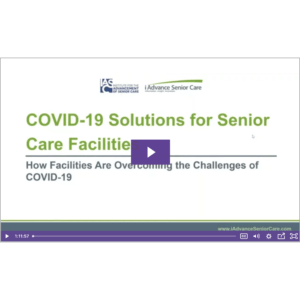LTC response plans must be ‘operationalized’
As professionals in the long-term care industry review and digest this recent Office of Inspector General report, which argues nursing home emergency response plans often lack relevant information, a main point to remember is that written plans and procedures must be “operationalized” if there can be any expectation of effectiveness.
While it is clear that gaps exist in emergency preparedness on all levels of healthcare, a great deal of progress has been made in long-term care that may not be adequately reflected in the report. Considering the major improvements in levels of preparedness that hospitals have attained in the last 10 years, nursing homes, in general, have neither been engaged in the process nor funded like hospitals. Nonetheless, several states’ nursing home associations and individual LTC providers have made a significant commitment to enhance emergency preparedness in long-term care regardless of funding limitations.
A great deal of this commitment involves the development of tangible resources and educational opportunities that help providers translate their written plans and procedures from basic guidance documents into operational programs that include comprehensive training regimens, drills, exercises, community collaboration and the procurement of specific supplies and equipment that will help a nursing home properly respond to disaster as well as sustain operations following an adverse event.
The benefits of comprehensive training programs at the facility level along with the development of realistic drills and exercises cannot be overstated. Nursing homes need to work with other healthcare providers including hospitals and emergency responders in the community (fire, law enforcement, EMS, emergency management, etc.)—even if they have to invite themselves to the table. LTC providers have an abundance of talent and resources that could be effectively utilized during a disaster as long as productive, mutually beneficial relationships are developed and maintained within the community-at-large long before disaster strikes.
Nursing home associations in states like California have developed a program entitled, “Your Disaster Plan—Making it Real,” which was designed to teach providers how to take their existing plans and operationalize them by integrating essential concepts promoted by CMS, the National Incident Management System and through the utilization of recognized emergency management models like the Nursing Home Incident Command System (NHICS).
Other states including Arizona, Colorado, Florida, Georgia, Rhode Island, Texas and Utah have initiated similar programs that I am familiar with that help providers understand that written documents need to be put into action and not just left to gather dust on a shelf to meet compliance.
To help LTC providers operationalize their plans, more focus on technical support and funding for nursing homes is needed to help this essential sector of healthcare engage with their local emergency response partners to identify clear expectations. These expectations may in fact be defined in the “community’s” planning protocols but not necessarily communicated to LTC providers.
This is especially true when the use of shared resources, like transportation for medically fragile people, is involved. The problem is clear, as there is only a limited amount of transportation resources available in any jurisdiction. This type of problem requires a solution that can be developed by the community working together as a team, not by individual healthcare organizations competing for the same limited resources.
Taking an organization’s emergency operations plan or disaster plan and “making it real” is what is needed to effectively plan, respond and recover from a disaster.

Stan Szpytek is the president of consulting firm Fire and Life Safety, Inc., in Mesa, Arizona, and is the Life Safety/Disaster Planning Consultant for the Arizona Health Care Association and California Association of Health Facilities. Szpytek is a former deputy fire chief and fire marshal with more than 35 years of experience in life safety compliance and emergency preparedness. For more information, visit www.emallianceusa.com or email Szpytek at Firemarshal10@aol.com.
Related Articles
Topics: Disaster Preparedness , Facility management , Risk Management











